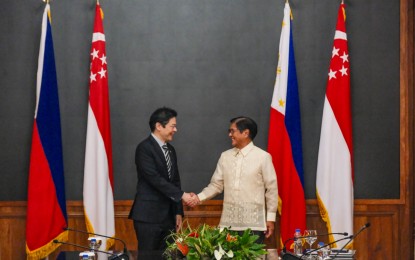Smart cities are cities that are built upon data and automated systems. They have the ability to adjust their infrastructure according to the needs of their citizens. This means, for example, that traffic lights can automatically alter their timings to optimize the flow of traffic, and all the traffic can be rerouted in an emergency in order to facilitate the movement of emergency vehicles.
Smart cities present numerous opportunities for us to improve healthcare infrastructure and could have profound impacts on a number of professional fields, including nursing.
Supplementing Telehealth
Telehealth refers to both the delivery of remote healthcare and the remote administration of healthcare businesses. Telemedicine is the field that is concerned with the remote delivery of healthcare, and this field of healthcare is one of the main beneficiaries of smart cities.
Telemedicine
Telemedicine refers to our ability to remotely deliver healthcare to patients. Now that high-quality video and audio conferencing is trivially easy, healthcare workers can accurately diagnose many patients without having to meet them in person. The ability to deliver healthcare services remotely is vital for serving rural areas, but it also has to play a part in bustling cities.
Many local healthcare systems across the United States find themselves in a difficult situation when it comes to resource management. In other words, some hospitals find themselves overcrowded while others are receiving comparatively few patients. Remote healthcare means that patients with the simplest needs can be dealt with remotely and strain can be taken off primary health care facilities.
Resource allocation
As the United States deals with the dual challenges of a rapidly growing and aging population, it is becoming increasingly important that we allocate our available resources appropriately. This has long presented a challenge to the national healthcare system – nurses are not evenly distributed across the country, meaning that many people have to travel significant distances for life-saving treatments. Recent advances in healthcare have meant that the nurses of the future can study their nursing degrees online, and then use the internet to dispense healthcare advice to patients. This goes a long way towards eliminating the distribution issue. Registered nurses can even study accelerated RN to BSN programs online, enabling them to expand the range of roles they can fill more rapidly.
Much of the data gathered by smart cities can be deployed to better understand how healthcare resources are currently being allocated, and where efficiency can be improved. For example, a smart city can track the progress of emergency vehicles through its streets as they respond to incidents. This will help them to identify potential bottlenecks, and ultimately implement better route finding.
Smartphones and Healthcare
Smart cities are driven by data, and one of the most fruitful sources of data is the smartphones that we all carry with us. Our smartphones contain a variety of sensors and are constantly gathering data. If people can be persuaded to share data with local governments and authorities, it can then be deployed to improve local health care services.
Smartphones as data sources
Smartphones generate a huge amount of data, and much of this data ends up being shared with a variety of different entities. This presents both opportunities and challenges from the perspective of a smart city planner. While access to that data would prove incredibly valuable in the planning and development of smart cities, it is not immediately available in most cases.
Before local governments can begin gathering data from cell phones, they would need to seek the permission of the cell phone owner. However, this requirement can somewhat be bypassed by accessing private data sources. The obvious downside to this is that local government then needs to shell out money on access to the relevant data sources, access that the data holders are unlikely to provide very cheaply.
The potential to utilize smartphone data for planning healthcare in smart cities is currently limited, but it presents an important potential avenue of research. As more patients begin to use their smartphones as diagnostic devices, we have the ideal opportunity to gather anonymized medical data that can be used to improve local services, as well as the machine learning that underpins automatic diagnostics.
Smart Health Cities
Smart health cities are a specific subset of smart cities that have been optimized mostly with health care in mind. There are three key features that smart cities need if they are to transition into smart health cities:
Public transport
Many people underestimate the impact that urban pollution can have on long-term health. However, people who live in densely populated urban cities are increasingly being exposed to air of an unacceptably low quality. This can lead to potentially life-threatening health ramifications, and urban pollution is believed to kill significant numbers of people in most developed countries. Smart health cities need to have robust and smart public transport infrastructure that enables the kind of mass transit essential for modern economies without incurring a huge environmental cost.
More automation
Automating the flow of traffic so that it is as efficient as possible and gives priority to public transport will reduce pollution and improve public health. More broadly, automation can be used to ensure that energy is being used as efficiently as possible and pollution and waste are minimized.
Better data networks
Robust data networks are essential for the transmission of the data that underpins smart cities.
The Future of Nursing
Like most other professions, the work of a nurse is likely to become increasingly data-driven over the next decade or so. We are already seeing data playing a prominent role in nursing today, and as telehealth and smart cities both play a more prominent role, so too will data.
The best source of medical data will continue to be primary health care facilities, such as hospitals, for the foreseeable future. However, this is a situation that could change relatively quickly. Whether nurses work in conventional healthcare facilities, or they take advantage of the growing number of remote working roles that the telemedicine industry offers, they are going to play an important part in gathering the data that we need to better plan our cities for the provision of healthcare in the future.
Smart cities are rapidly changing the way that we think about urban planning, especially with regard to healthcare. The impact of smart cities on the future of nursing remains uncertain, but nurses may well have to adjust to their existence.










